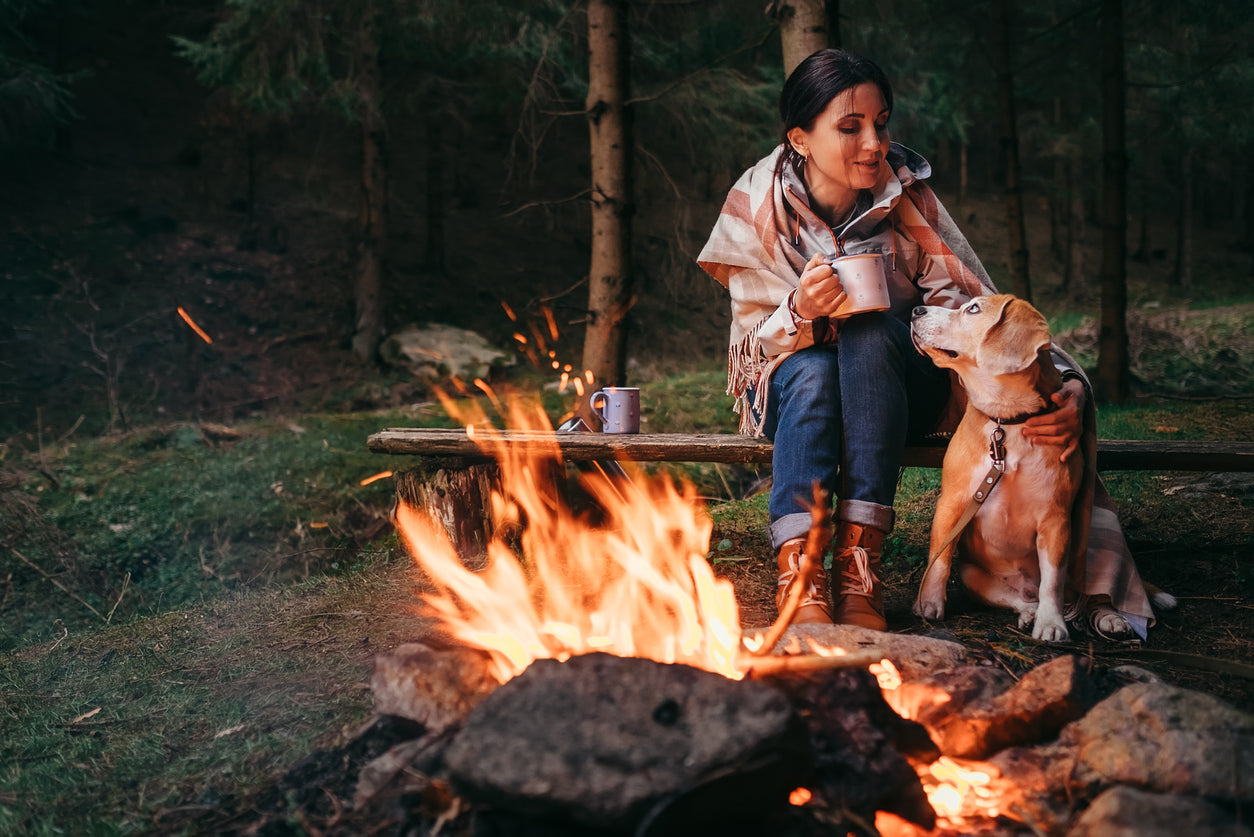
How to Camp with a Dog and Keep Them Safe
Taking your dog camping sounds like nothing but a good time, but that’s only the case if you prepare yourself and your dog well enough ahead of time. Between heat exhaustion, insect bites, contaminated water, toxic plants, and wild animals, there’s no shortage of dangers your pet can encounter.
But once you learn how to camp with a dog safely, a whole world of fun will open up to you two (or more!). So prep up and pack up; it’s time to get outdoors and discover the best of nature with Gear.com.
Related read: Tips for Hiking with Dogs
How to Prepare Yourself for Camping with Your Dog
It’s easy to get caught up in how fun it could be to roam the wilderness with your best bud by your side. But don’t let that idea overrun the reality. Yes, camping with your dog is very fun and fulfilling—it’s also work. In fact, keeping your pup safe and healthy takes more effort out in the wild than it does at home.
Think about it. There are no fences, everything is new and exciting (and overwhelming) to your pet’s senses, and there are potential dog dangers at every turn.
Prep yourself for how to camp with a dog by:
- Setting realistic expectations. It’s not all relaxing and playing—there’s a lot of responsibility on you to keep your pet safe. You need to think through potential scenarios and set your dog up for success.
- Finding a dog-friendly campsite. Not all sites are created equal when it comes to pet-friendliness. Keep reading for more information on how to find a welcoming place to stay.
- Packing the right gear. We’ll talk more about this below, but for now, just know that having the proper equipment goes a long way in making camping doable and enjoyable.
How to Prepare Your Dog for Camping
Prepping your dog to go camping is a good idea before heading out wide-eyed and optimistic.
Ask yourself these questions to know if your dog’s ready for it:
- Is she aggressive?
- Does he constantly bark?
- Do they do well on a leash?
- Does he run off the minute they’re off the leash?
- Is she trained to follow your command?
- Can she interact well with people and other dogs?
Next, do a trial run in your backyard.
- Will they happily stay leashed while you’re working in the area?
- Does he co-sleep next to you?
- Does he bark all night?
If all goes well, here’s how to prepare your dog for camping in the real world:
- Visit the vet. Your pet needs updated vaccinations, a microchip, and their registration and license. Her health should also be checked, and she should be given a prescription for flea and tick prevention.
- Get them groomed. Camping with a dog is messy, but even more so if they have unruly hair and nails.
- Take a photo. Keep this with you in case your dog gets lost. Be sure to capture any unique features or markings.
How to Keep Your Dog Safe While Camping
Obviously, you want to keep your dog safe while camping—they’re your best friend! There are a lot of hidden dog dangers out in the wild, so knowledge and preparation are key.
- Never leave your dog unattended. This can be a hard rule to follow, especially when you want to hike a certain no-dog trail or splurge at a national park lodge restaurant. The truth is, leaving your dog alone in an unfamiliar environment or in a car is a recipe for disaster. Whether attracting a bear, eating whatever they can get their mouth on, or getting overheated, leaving them alone is never a good idea.
- Keep an eye out for sneezing, itching, wheezing, or any other sign of an allergic reaction to pollen or other plants in the area. If you get worried about your dog, you may want to remove them from the environment and take them to a vet for allergy relief medicine.
- Always carry water and a bowl with you, just to be safe. Intense heat and sun exposure, especially during high-energy activities, is a recipe for dehydration for your pet. Symptoms include heavy breathing, weakness, disorientation, dry gums, and a bright red tongue. Your dog will need more than his usual amount of hydration. Dogs can generally drink safely from running stream water, but sometimes it’s contaminated. And dogs should never drink from standing water.
- Regularly check their paws for ticks, burrs, cuts from sharp rocks, and broken glass. Dog paws are sensitive to temperatures and rough ground.
- Follow all pet policies wherever you are camping, especially regarding leashing. It’s for your dog’s own good.
Where Dogs Should Sleep When Camping
If possible, when camping, your dog should sleep in their own familiar dog bed (or crate, if they usually sleep in one) next to where you’re sleeping in a tent, car, camper, or RV. This familiarity helps them feel comfortable and able to sleep better.
How to Keep Your Dog Warm During Camping
Keep your dog warm during camping in cold weather by:
- Keeping them dry
- Feeding them nutrient-rich food and giving them plenty of water
- Bringing their favorite blanket from home
- Playing with them
- Giving plenty of warm cuddles
- Sitting with them next to a campfire
- Using a hot water bladder with a cotton cover
- Putting a coat on them
- Putting their paws in booties
How to Keep Your Dog from Barking While Camping
It can take practice, but it’s possible to keep your dog from barking while camping by:
- Training your dog to bark and stop barking on command
- Choosing a campsite with a screened view (so they can’t see other people’s campsites)
- Exercising your doggie, both mentally and physically
- Attaching a leash to a harness, not a collar
- Not leaving them alone
How to Find a Dog-Friendly Campsite
Whether you’re camping at a private campground or on public lands, you’ll need to be sure dogs are allowed before you arrive (including for specific number, size, and/or breed). Be aware you may need to book a dedicated pet site, pay a pet fee, and prove your pet’s vaccinations are up to date.
Many online camping reservation systems will let you filter results accordingly, but here are some general recommendations.
RV Parks and Private Campgrounds
When an RV park or private campground does allow dogs, these rules typically apply:
- Aggressive dogs are not permitted.
- Dogs must be leashed with a non-retractable leash that’s shorter than six feet long.
- Excessive or uncontrollable barking into the night may result in the campground manager asking you to leave the campground.
If camping at KOA, many provide pet wash stations and either shared or individual fenced-in areas for your dog to play off-leash.
State Parks
Whether a dog is allowed to camp in a state park varies from place to place. It’s best to contact a specific state park specifically and ask about their pet policy.
National Parks
Go to the Menu on a specific park’s NPS site and click on Plan Your Visit. Under Basic Information, click on Pets. Each park will list specific pet regulations and dangers in the area.
For example, in Zion National Park, pets can only go on the Pa’rus Trail, can’t go on the shuttle bus, and need to be kept out of the water because of a toxic algal bloom.
National Forest Campgrounds
All U.S. national forest tent and RV campgrounds allow pets, but they are required to be
“leashed and under control” at all times in the camp and on the trails. This strict rule is for you and your pet’s safety due to the danger of disease and bears.
The same rules apply to RV camping with dogs in national forests outside of established campgrounds (boondocking or dispersed camping) unless you are in the backcountry. Just remember, the same dangers exist there and maybe even more so. Use caution and common sense.
Where to Find Dog Camping Gear
Now all you need to know is where to find the best camping gear for your dog. That’s easy— Gear.com.
We've got the goods you need, from high-quality seat covers and water bowls to harnesses and medical kits.




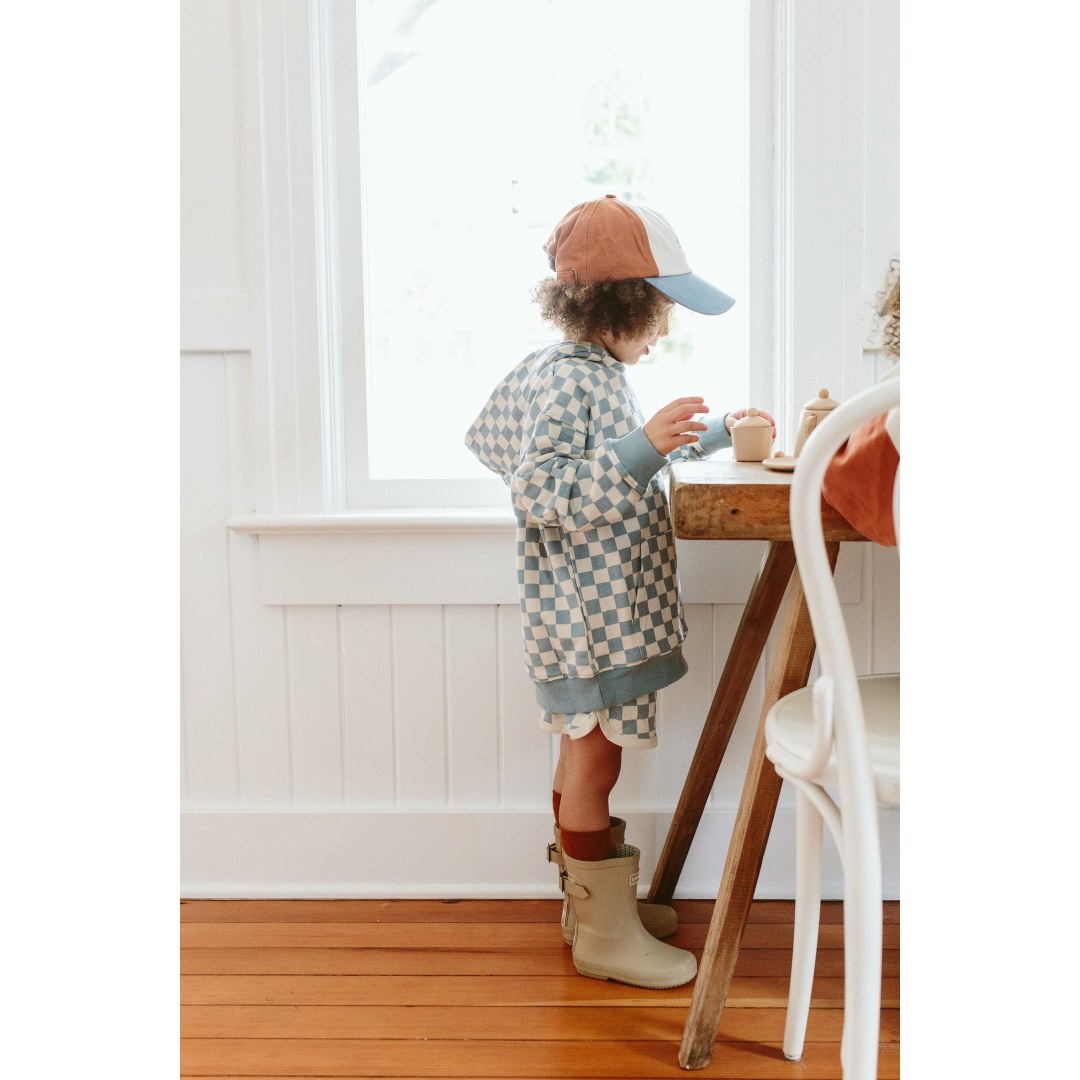
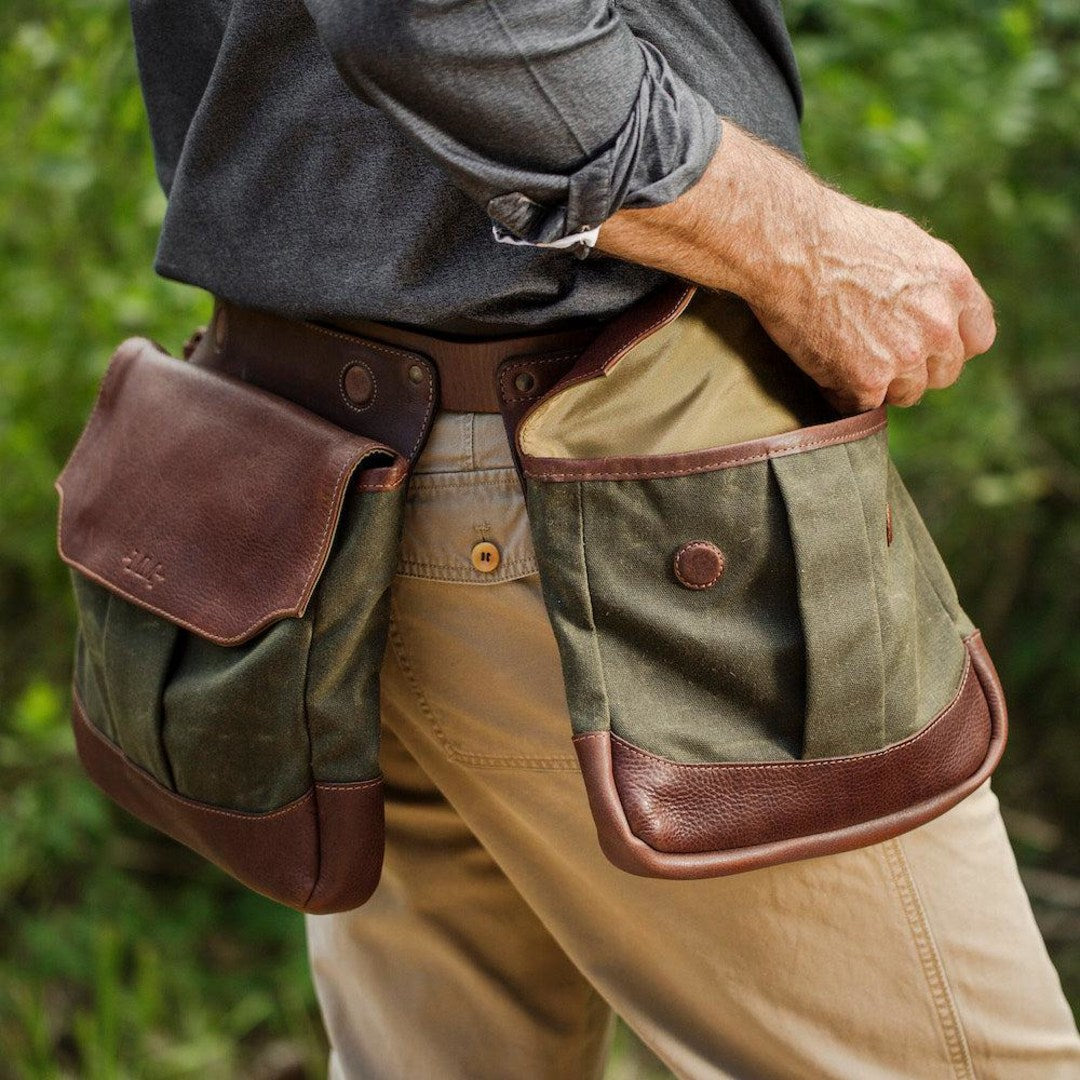
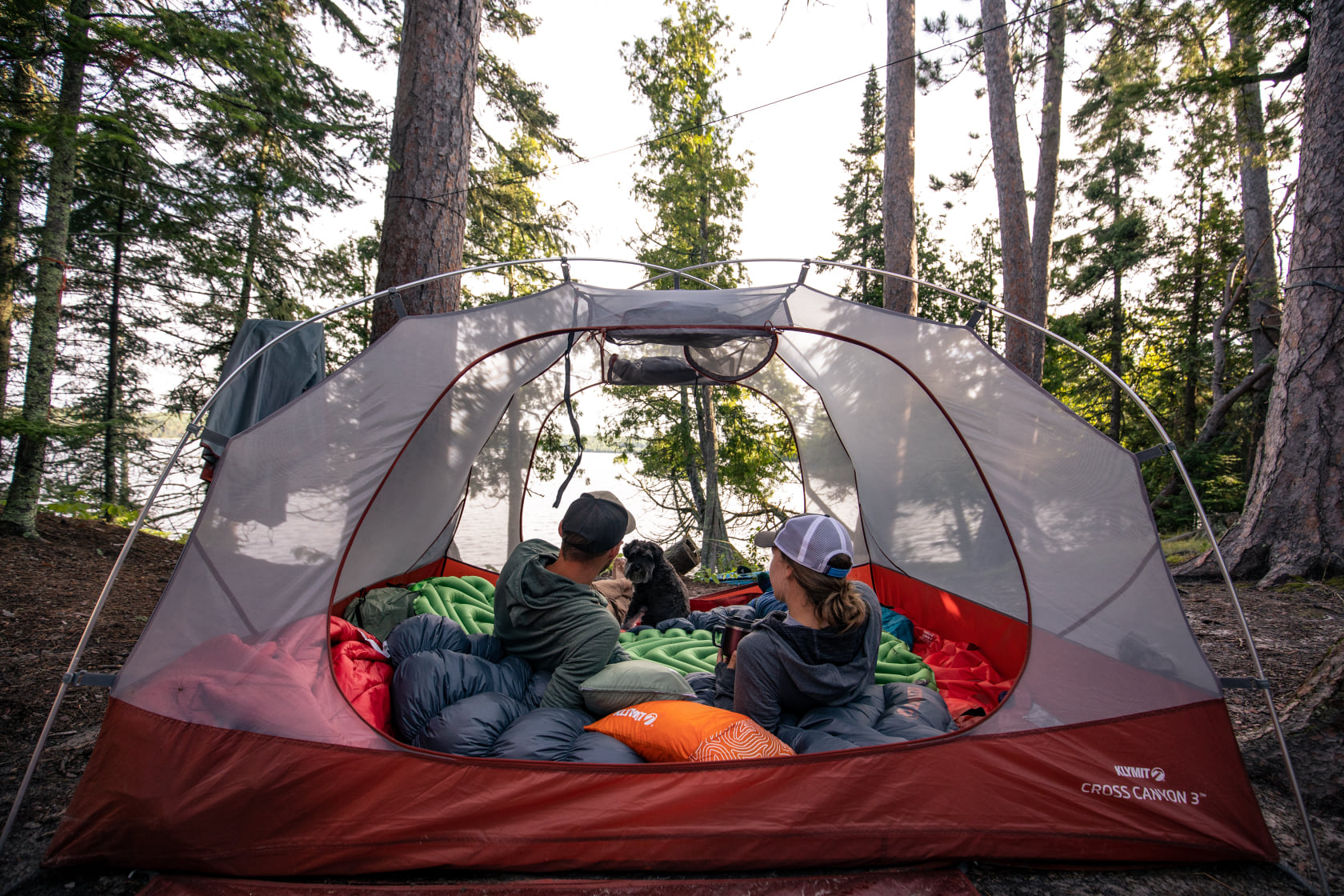

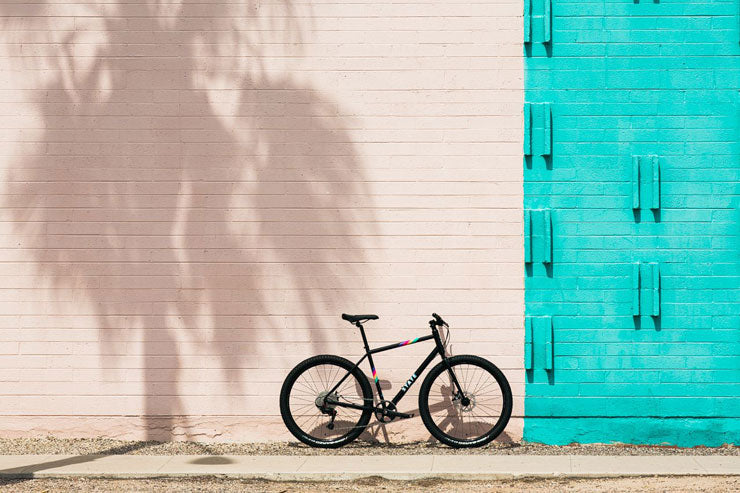


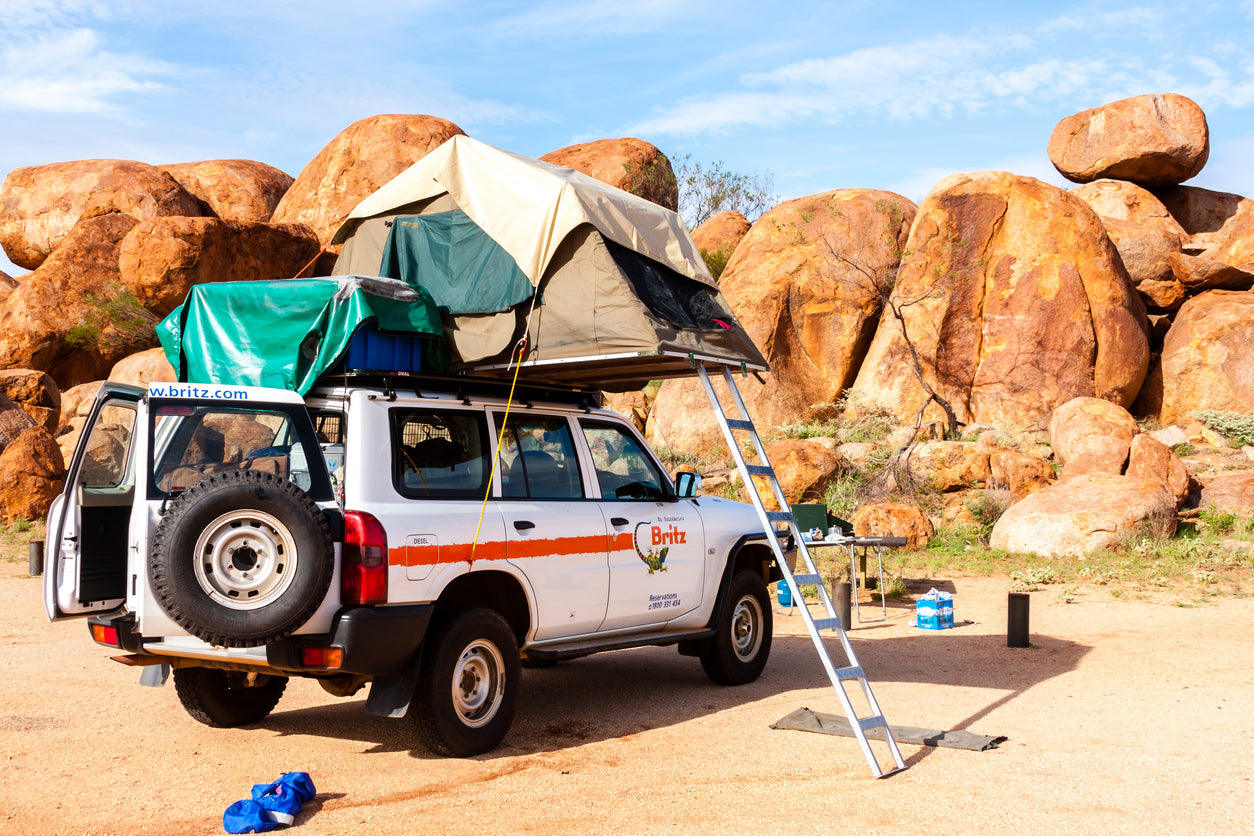

Leave a comment
This site is protected by hCaptcha and the hCaptcha Privacy Policy and Terms of Service apply.